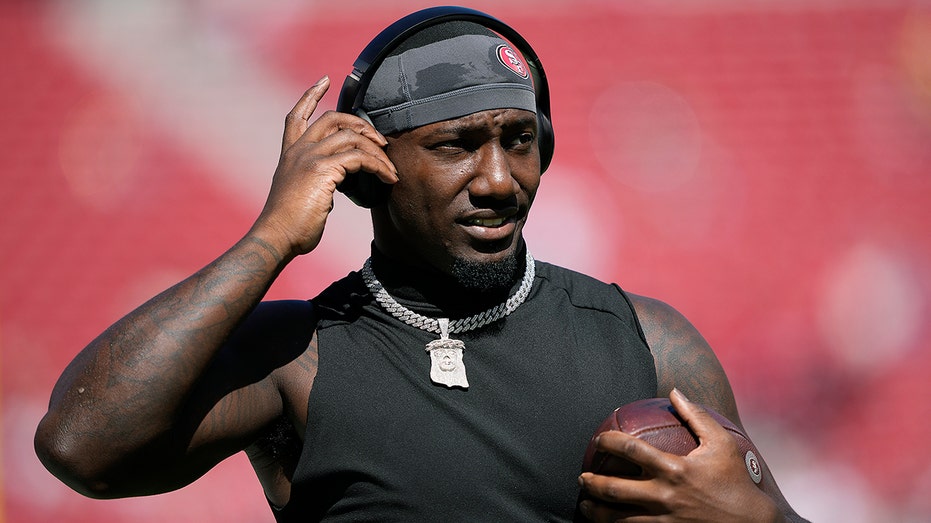Here’s Why Abortion Rights Activists Are Taking Their Fight to the States
In the wake of the U.S. Supreme Court decision overturning Roe v. Wade last year, there has been a scramble in the states to either further limit or protect access to abortion, with outcomes largely determined by which party controls the levers of state government. This, in turn, has led to a wave of lawsuits pushing back against particularly restrictive state laws.Mary Ziegler, a law professor at University of California, Davis, said that abortion rights advocates were trying to “reverse engineer” the incremental legal strategy that anti-abortion groups used to undermine Roe over several decades.“There are very few people who are going to be sympathetic to the idea of making someone carry a pregnancy to term that’s going to kill them, for example. So you’re trying to start with what you consider the more practical, winnable cases,” said Ziegler, who has written several books on the history of abortion access in the United States. While a potential victory could expand access to abortion in the short term, advocates are also filing these cases with an eye to long-term effects even in the case of defeat.“You may be trying to show that these laws are unworkable, or you may be trying to show that they have cruel effects, or you may be trying to build political opposition to them,” Ziegler continued. “Also, you may be trying to gain recognition of state constitutional models that can be expanded or reinterpreted over time.”The role of state courts in determining the future of abortion access was particularly apparent this week, as state supreme courts in Arizona, New Mexico, and Wyoming heard arguments in abortion-related cases. A lower court in Idaho is also hearing a case on whether four women can pursue lawsuits against the state after being denied abortions.The Arizona case concerns a pre-statehood ban on nearly all abortions. Last year, a lower court ruled that the 1864 law, which only allows exceptions when the mother’s life is endangered, could not be applied to physicians performing abortions in the first 15 weeks of pregnancy. However, anyone who is not a doctor would still be subject to prosecution under the old law.Jill Habig, the founder of the Public Rights Project, which is representing one of the defendants in the Arizona case, identified the connection between litigation to preserve abortion rights in states and ballot initiatives to expand access. Arizona will likely have an initiative on the ballot in 2024 to permit abortion through fetal viability, which is typically 24 weeks of pregnancy.“What we’ve seen in the last couple of years is that litigation can often move faster in state courts than voters can, because of the election calendar,” Habig said. “This litigation is trying to preserve the status quo and make sure that Arizona doesn’t become the next Texas … then voters can potentially expand access.”Another abortion-related decision in Texas made national headlines this week, when the state Supreme Court overturned a lower court ruling that would have allowed a pregnant woman whose fetus had been diagnosed with a fatal condition to obtain an abortion. The woman, Kate Cox, had already traveled out of state for the procedure.The state Supreme Court argued that Cox, who was more than 20 weeks pregnant, did not qualify for an exception as outlined in Texas’s law banning abortion, which only applies when a pregnancy endangers the life or health of the mother. Cox’s lawyers and doctors argued that continuing her pregnancy would threaten her health and ability to have children in the future. Cox has been to the emergency room four times during her pregnancy.Last week, a pregnant woman in Kentucky filed a lawsuit challenging that state’s two abortion bans, citing the state constitutional right to privacy and self-determination. The Kentucky Supreme Court previously upheld the state’s abortion bans, ruling in February that abortion providers could not raise their patients’ constitutional rights on their behalf. The decision noted that patients themselves could challenge the constitutionality of the laws, a tactic now taken by plaintiff Jane Doe in this latest lawsuit.Ziegler said there was a pattern to several of these lawsuits, which include plaintiffs in “tragic circumstances,” often with wanted pregnancies, like Cox in Texas.“We’ve started to see a lot more of these cases where either the plaintiffs have exceptional circumstances or the argument is based on exceptional circumstances,” Ziegler said.Depending on the location, state courts may potentially be friendlier venues to abortion rights cases than federal courts; in many states, supreme court justices are elected by voters, and some state constitutions more explicitly protect the right to privacy than the U.S. Constitution.“The state court landscape offers more opportunity both for immediate action and then short-term or medium-term change over the next few years,” Habig said.Meanwhile, the U.S. Supreme Court announced on Wednesday that i

In the wake of the U.S. Supreme Court decision overturning Roe v. Wade last year, there has been a scramble in the states to either further limit or protect access to abortion, with outcomes largely determined by which party controls the levers of state government. This, in turn, has led to a wave of lawsuits pushing back against particularly restrictive state laws.
Mary Ziegler, a law professor at University of California, Davis, said that abortion rights advocates were trying to “reverse engineer” the incremental legal strategy that anti-abortion groups used to undermine Roe over several decades.
“There are very few people who are going to be sympathetic to the idea of making someone carry a pregnancy to term that’s going to kill them, for example. So you’re trying to start with what you consider the more practical, winnable cases,” said Ziegler, who has written several books on the history of abortion access in the United States. While a potential victory could expand access to abortion in the short term, advocates are also filing these cases with an eye to long-term effects even in the case of defeat.
“You may be trying to show that these laws are unworkable, or you may be trying to show that they have cruel effects, or you may be trying to build political opposition to them,” Ziegler continued. “Also, you may be trying to gain recognition of state constitutional models that can be expanded or reinterpreted over time.”
The role of state courts in determining the future of abortion access was particularly apparent this week, as state supreme courts in Arizona, New Mexico, and Wyoming heard arguments in abortion-related cases. A lower court in Idaho is also hearing a case on whether four women can pursue lawsuits against the state after being denied abortions.
The Arizona case concerns a pre-statehood ban on nearly all abortions. Last year, a lower court ruled that the 1864 law, which only allows exceptions when the mother’s life is endangered, could not be applied to physicians performing abortions in the first 15 weeks of pregnancy. However, anyone who is not a doctor would still be subject to prosecution under the old law.
Jill Habig, the founder of the Public Rights Project, which is representing one of the defendants in the Arizona case, identified the connection between litigation to preserve abortion rights in states and ballot initiatives to expand access. Arizona will likely have an initiative on the ballot in 2024 to permit abortion through fetal viability, which is typically 24 weeks of pregnancy.
“What we’ve seen in the last couple of years is that litigation can often move faster in state courts than voters can, because of the election calendar,” Habig said. “This litigation is trying to preserve the status quo and make sure that Arizona doesn’t become the next Texas … then voters can potentially expand access.”
Another abortion-related decision in Texas made national headlines this week, when the state Supreme Court overturned a lower court ruling that would have allowed a pregnant woman whose fetus had been diagnosed with a fatal condition to obtain an abortion. The woman, Kate Cox, had already traveled out of state for the procedure.
The state Supreme Court argued that Cox, who was more than 20 weeks pregnant, did not qualify for an exception as outlined in Texas’s law banning abortion, which only applies when a pregnancy endangers the life or health of the mother. Cox’s lawyers and doctors argued that continuing her pregnancy would threaten her health and ability to have children in the future. Cox has been to the emergency room four times during her pregnancy.
Last week, a pregnant woman in Kentucky filed a lawsuit challenging that state’s two abortion bans, citing the state constitutional right to privacy and self-determination. The Kentucky Supreme Court previously upheld the state’s abortion bans, ruling in February that abortion providers could not raise their patients’ constitutional rights on their behalf. The decision noted that patients themselves could challenge the constitutionality of the laws, a tactic now taken by plaintiff Jane Doe in this latest lawsuit.
Ziegler said there was a pattern to several of these lawsuits, which include plaintiffs in “tragic circumstances,” often with wanted pregnancies, like Cox in Texas.
“We’ve started to see a lot more of these cases where either the plaintiffs have exceptional circumstances or the argument is based on exceptional circumstances,” Ziegler said.
Depending on the location, state courts may potentially be friendlier venues to abortion rights cases than federal courts; in many states, supreme court justices are elected by voters, and some state constitutions more explicitly protect the right to privacy than the U.S. Constitution.
“The state court landscape offers more opportunity both for immediate action and then short-term or medium-term change over the next few years,” Habig said.
Meanwhile, the U.S. Supreme Court announced on Wednesday that it would decide whether to restrict access to mifepristone, a medication used in more than half of all abortions in the country. The Biden administration and the manufacturer of the drug had appealed a lower court ruling that would make it more difficult to obtain mifepristone. The court’s consideration of the case demonstrates that the future of abortion access will not only be determined on a state-by-state basis.
Vibe check: Just say no (to Monumental)
Each week, I provide an update on the vibes surrounding a particular policy or political development. This week: a decision that has Washingtonians on edge.
I try to keep my own personal feelings out of this newsletter, beyond the occasional arch aside. Alas, this week must be an exception, as I express the ire echoed by many Washingtonians about the decision by Monumental, owner of Washington’s NHL and NBA teams, to move their arena across the Potomac River into Virginia.
(You may be wondering, why did Grace dedicate an entire, lengthy segment of her weekly newsletter to this personal screed? First of all, if you’re based in Washington, D.C.—which I know many IW readers are—you probably have a strong opinion on this as well. Perhaps more importantly, the House did not vote until 5 p.m. on the day that this newsletter was due, and I needed to come up with something to fill this space.)
Let me first preface this by saying: I do not care about sports. I’ve only seen the Capitals play once, and thought that hockey was too fast to follow. I’ve never seen the Wizards play, and—from what little I know about basketball gleaned from watching SportsCenter at physical therapy—they’re supposedly pretty terrible. (Editor’s note: Can confirm.) The better Washington basketball team, the WNBA Mystics, would reportedly remain at the Capital One Arena in Washington, D.C.’s Gallery Place neighborhood.
But moving the arena to the Potomac Yard neighborhood of Alexandria, Virginia—a decision announced by Governor Glenn Youngkin and team owner Ted Leonsis on Wednesday—is a bad idea. I say this not just as a Washington resident, but as a former denizen of Alexandria. (I’m not going to explain all the details of the reported deal, but you should check out this Washington Post rundown.)
First of all, even if Capital One maintained its status as a live events venue, this would be a massive blow to Washington, D.C.’s already struggling downtown. The combination of the Covid-19 pandemic and the continued trend of work from home has decimated Gallery Place and surrounding neighborhoods like Penn Quarter.
But I believe it would be bad news for Alexandria, as well. The area across the street from the proposed new arena is home to a classic suburban strip mall, including one of the best Target stores in the DMV and my favorite Barnes and Noble. It’s also next to an absolutely bangin’ bike trail, which—along with being a vital community service—helped keep me and many other Northern Virginia residents of the time sane during the height of Covid. The proposal for the new arena includes future developments that could disrupt the idyll of the strip mall–bike trail nexus, not to mention strain the lowly Route One roadway, which already struggles with a glut of traffic.
Many local fans and Washington, D.C.-area residents are not pleased—at least, if memes are any indicator to go by. “I feel like no one is talking about the genius of putting an outdoor concert venue a quarter of a mile from an active airport runway,” Jason Rogers, the NHL reporter for Washington City Paper, wrote on X, noting the proposed arena’s proximity to Ronald Reagan National Airport.
“Bailing on your city is a pretty bold move for the worst team in basketball, after being bad for years. If you were actively trying to have as few fans as possible, what would you do differently?” Sam Baker, an editor for Axios, said in another post on X. José Andrés, the restaurateur with several restaurants in Gallery Place and Penn Quarter, wrote on X that he hoped these teams “can stay in the city that’s shown so much support.”
Despite the dread evinced by some Alexandrians, the local government is ecstatic. “A project this special will help the City realize our collective strategy and the vibrant vision for this neighborhood and for our City as a whole,” Alexandria Mayor Justin Wilson said. For now, the congressman representing the proposed arena location is remaining circumspect: “This is, of course, an exciting announcement and I am eager to learn more about practicalities, economics and opportunities involved,” said Representative Don Beyer in a statement.
(Moreover, there is no guarantee that any of the economic boom these local politicos are dreaming up will ever come to pass. As a 1997 Brookings Institution study determined, “Regardless of whether the unit of analysis is a local neighborhood, a city, or an entire metropolitan area, the economic benefits of sports facilities are de minimus.”)
Meanwhile, conservative lawmakers in the Virginia state legislature and the NIMBYs of NoVa have already raised concerns about moving the arena, threatening its prospects; the move must be approved by state legislators. Washington, D.C., residents—sports lovers and sports-indifferents alike—can only hope some kind of political spanner is thrown in the works before a final decision can be made.
What I’m reading
Pet of the week




